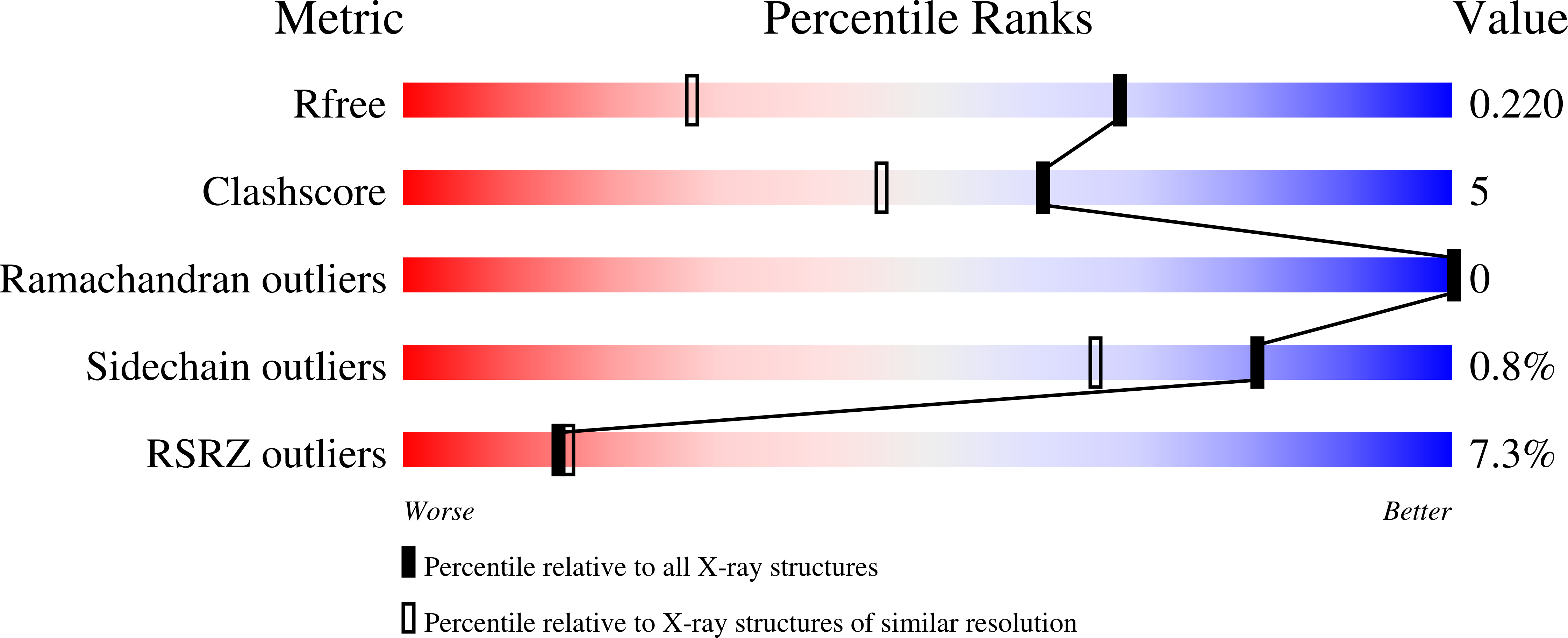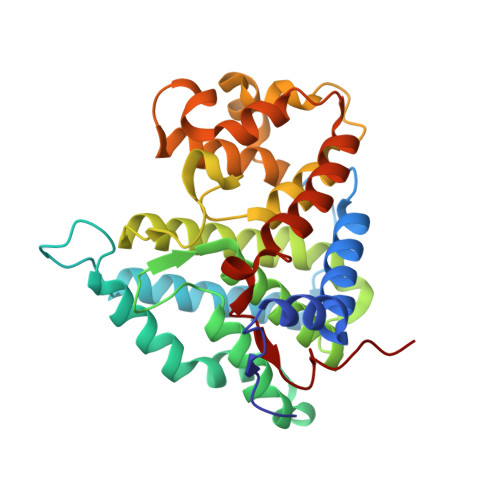Crystal Structure of the Pp2A Phosphatase Activator: Implications for its Pp2A-Specific Ppiase Activity
Leulliot, N., Vicentini, G., Jordens, J., Quevillon-Cheruel, S., Schiltz, M., Barford, D., Van Tilbeurgh, H., Goris, J.(2006) Mol Cell 23: 413
- PubMed: 16885030
- DOI: https://doi.org/10.1016/j.molcel.2006.07.008
- Primary Citation of Related Structures:
2IXM, 2IXN, 2IXO, 2IXP - PubMed Abstract:
PTPA, an essential and specific activator of protein phosphatase 2A (PP2A), functions as a peptidyl prolyl isomerase (PPIase). We present here the crystal structures of human PTPA and of the two yeast orthologs (Ypa1 and Ypa2), revealing an all alpha-helical protein fold that is radically different from other PPIases. The protein is organized into two domains separated by a groove lined by highly conserved residues. To understand the molecular mechanism of PTPA activity, Ypa1 was cocrystallized with a proline-containing PPIase peptide substrate. In the complex, the peptide binds at the interface of a peptide-induced dimer interface. Conserved residues of the interdomain groove contribute to the peptide binding site and dimer interface. Structure-guided mutational studies showed that in vivo PTPA activity is influenced by mutations on the surface of the peptide binding pocket, the same mutations that also influenced the in vitro activation of PP2Ai and PPIase activity.
Organizational Affiliation:
Institut de Biochimie et de Biophysique Moléculaire et Cellulaire, UMR8619, Bât 430, Université de Paris-Sud, 91405 Orsay Cedex, France.














